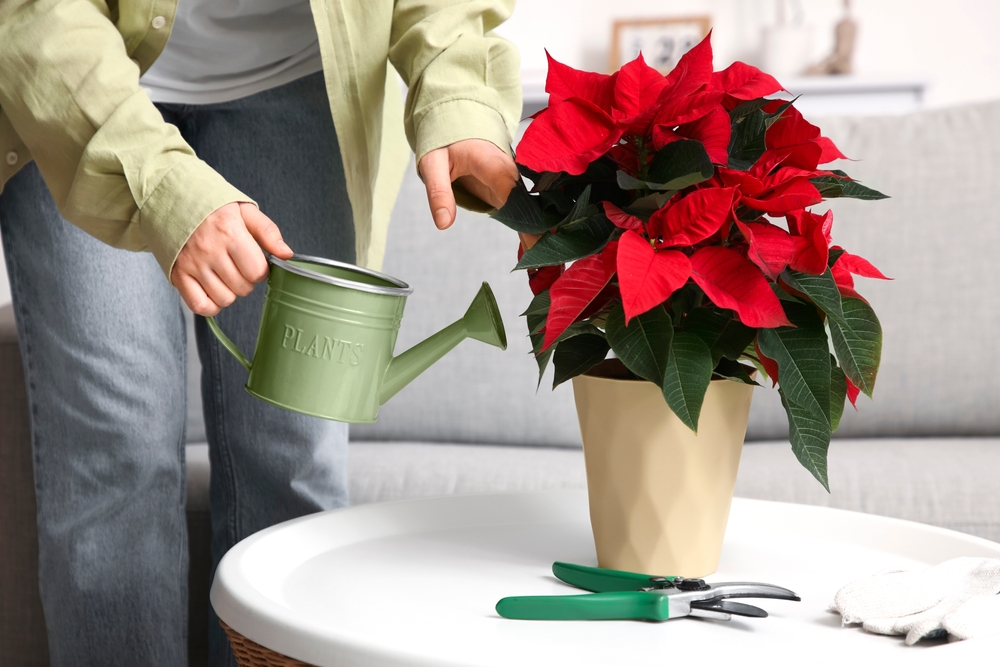The holidays have a way of sneaking up on our wallets, and it’s not just the obvious big-ticket gifts that drain our budgets. Every season, certain everyday items quietly climb in price, taking advantage of the surge in demand when no one’s really paying attention. From party staples to household must-haves, retailers know these are the things we’ll buy no matter what—so the cost spikes just when we need them most.
The result? A holiday shopping list that feels more expensive than ever, even before the presents are wrapped. Knowing which items are most likely to skyrocket can help us plan ahead, shop smarter, and avoid sticker shock in December. Here are 10 surprising things that cost way more during the holidays than any other time of year.
1. Christmas Lights

As you haul out the decorations, you might notice that the cost of Christmas lights has taken a leap. A seemingly ordinary item, they surprisingly become a hot commodity each holiday season. Retailers know that people are willing to pay a little extra for these twinkling beauties to light up their homes with holiday spirit. According to retail analyst Jane Cohen, the increase in demand for LED and smart lights has contributed to the price jump, as more people opt for energy-efficient options. It’s not just about aesthetics—smart lights can sync with music or be controlled remotely, adding a modern twist to traditional decor.
The popularity of elaborate light displays has also contributed to the rise in prices. In neighborhoods where “best-decorated house” competitions have become a cherished tradition, there’s pressure to up the ante each year. This demand fuels premium pricing, especially for those looking to outshine their neighbors. Green and red might be the colors of the season, but gold seems to be the new green when it comes to purchasing these holiday essentials. So, while you’re decking the halls, you might be shelling out a bit more cash than you anticipated.
2. Wrapping Paper

Wrapping paper, to some, might seem like a disposable part of the holiday, but its prices tell a different story. It’s an item that’s largely dictated by consumer habits and the increasing desire for aesthetically pleasing presentation. People now seek out high-quality, unique designs, which has led to a surge in luxury options. Specialty papers with intricate designs, textures, and even sustainable materials are in high demand. As a result, prices escalate, especially as more people look for that Instagram-worthy gift presentation.
The environmental impact of wrapping paper is also becoming a talking point. As awareness increases, so do the costs of producing eco-friendly alternatives. Though the market has seen a rise in recycled and recyclable options, these often come at a premium. Shoppers who prioritize sustainability over savings are willing to pay the extra price. This shift is changing the way we view what was once a simple, disposable item, turning it into a conversation piece of its own.
3. Poinsettias

Those red and green poinsettias you see everywhere during the holiday season? They come with a price tag that’s been creeping up over the years. While poinsettias are synonymous with December decor, their rising cost is influenced by a variety of factors, including the complexity of their cultivation. Horticulturist Dr. Anne Greene highlights that these plants require precise conditions for growth and must be carefully timed to bloom precisely for the holiday season. This meticulous process and the seasonal rush contribute significantly to their higher prices.
Furthermore, the logistics of transporting delicate poinsettias in winter add another layer of cost. These plants need to be kept at specific temperatures to prevent damage, making shipping more challenging and expensive. Retailers often pass these costs onto consumers, who view poinsettias as an essential part of their holiday decor. The rising demand for unique varieties and colors also plays a role, as growers experiment with new hybrids to pique consumer interest. So, while they’re beautiful, they’re also a reminder that nature’s beauty comes at a cost.
4. Holiday Candles

Candles are a staple of holiday ambiance, creating that warm, inviting glow that sets the mood for festive gatherings. Yet, when the holidays roll around, candle prices can burn a hole in your wallet. The demand for seasonal scents—think cinnamon spice, pine, and peppermint—increases significantly, with people eager to fill their spaces with holiday aromas. Premium candles, especially those with natural waxes and essential oils, see a notable price hike.
Artisanal and designer candles have carved out a niche market, offering unique scents and crafting stories that appeal to consumers looking for something special. These candles often come with bespoke packaging, making them popular gifts. The allure of a thoughtfully chosen candle can justify the splurge for many. As people become more conscious of the ingredients in their products, they often choose higher-quality candles, driving up the demand—and the prices—during the holiday season.
5. Baking Ingredients

Stocking up for holiday baking might surprise you when you notice your grocery bill. Essential baking ingredients such as flour and spices often experience a significant price spike during the holidays. According to economist Dr. Lisa Patel, this is largely due to the increased demand for traditional holiday treats. As families gather to bake cookies, cakes, and pies, the market for these basic ingredients swells. This demand, coupled with seasonal supply chain strains, can lead to noticeable price increases.
Spices, in particular, can see steep price hikes as they’re often sourced from specific regions with complex logistics. For instance, vanilla and nutmeg, staples in holiday recipes, are frequently imported, making them susceptible to international market fluctuations. As bakers seek out the best ingredients for their holiday confections, they may find themselves spending more than anticipated. However, the payoff is often a table full of cherished homemade goods, a trade-off many are willing to make.
6. Holiday Travel

Travel during the holiday season is notorious for being tough on the wallet, but it’s become even more so recently. Whether you’re visiting family or jetting off for a vacation, airfare and hotel prices tend to soar as demand peaks. Airlines and hotels capitalize on the influx of travelers, adjusting prices accordingly. This surge pricing can make travel plans significantly more expensive, forcing people to book far in advance or gamble on last-minute deals.
The holiday rush also leads to increased competition among travelers, further driving up costs. As more people return to traveling post-pandemic, the demand for flights and accommodations has skyrocketed. Hotels fill up quickly, and flights become fully booked, leaving less room for budget-friendly options. Though it’s a time for joy and celebration, the financial burden of holiday travel can weigh heavily on those looking to reconnect with loved ones or escape for a festive getaway.
7. Festive Cards

Sending holiday cards remains a cherished tradition for many, but the price has taken a surprising upward turn. Once a simple gesture, modern holiday cards often feature custom designs, high-quality paper, and even personalized messages, all of which add to their cost. Graphic designer Emily Tran notes that contemporary consumers are not just purchasing cards; they’re investing in a personalized experience that reflects their unique style and message. This has led card companies to offer more premium options with intricate designs and added features like foil stamping or letterpress.
The trend of sending photo cards has also increased production costs. As people opt for professional photos to include in their holiday greetings, the expenses for printing and customizing these cards rise. The demand for unique, memorable cards that stand out has pushed the market towards more expensive offerings. Though digital greetings are an alternative, many still prefer the tangible nature of a physical card, despite the price tag.
8. Paper Goods

While paper plates and napkins might seem like an afterthought, their prices can surprise you during holiday gatherings. As people plan for parties and family meals, the demand for festive-themed paper goods spikes. Retailers capitalize on this by introducing seasonal designs that entice consumers to spend more. It’s not uncommon for prices to increase for these items, as people seek out coordinated themes for their events.
The production of themed paper goods often involves higher costs due to the limited run and specialized designs. As manufacturers roll out new patterns and styles each year, the cost of producing these seasonal goods can drive up prices for consumers. The convenience of disposable options remains appealing to many, especially when hosting larger groups. While the extra cost might seem minor, it adds up quickly when planning multiple holiday events.
9. Ornaments

Ornaments are at the heart of many holiday traditions, but their prices have been on a curious rise. The market for ornaments has diversified, offering everything from handcrafted pieces to limited-edition collectibles. As more people look for unique items to adorn their trees, retailers have responded with a range of premium options. The demand for specialty ornaments, whether they’re personalized or part of a themed collection, has contributed to higher prices.
The rise in popularity of certain themes and trends each year also plays a part. Collectors and enthusiasts are willing to pay a premium for rare finds or exclusive releases. As retailers capitalize on these trends, they introduce more high-end ornaments that appeal to the collectors’ market. While these decorations may be small, their impact on your holiday budget can be surprisingly large.
10. Trees

The quintessential symbol of the holiday season, Christmas trees, have seen a notable uptick in prices. Whether real or artificial, the costs associated with these festive staples have grown over the years. This can be attributed to several factors, including the rising costs of farming and transporting real trees. Artificial trees, on the other hand, have evolved with new technology, offering pre-lit setups and realistic designs that come with a higher price tag.
Environmental factors have also impacted the availability and cost of real trees. Issues like droughts and wildfires have reduced supplies, driving up prices as demand remains steady. Consumers who seek out eco-friendly or locally sourced options may also find themselves paying more. Despite the costs, a Christmas tree remains a central part of the holiday experience for many, anchoring traditions and memories in its branches.
This article is for informational purposes only and should not be construed as financial advice. Consult a financial professional before making investment or other financial decisions. The author and publisher make no warranties of any kind.








